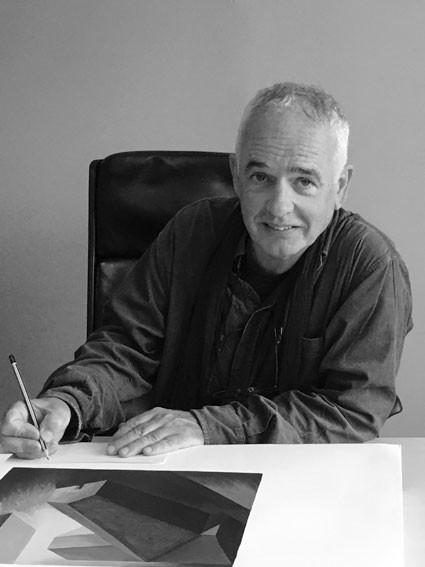
Ilídio Salteiro
Ilídio Salteiro was born in Alpedriz, Alcobaça, in 1953. been a student of Rocha de Sousa, Gil Teixeira Lopes, Jorge Pinheiro, Lagoa Henriques, Lima de Carvalho, Matilde Marçal, Conceição Ferreira, Rogério Ribeiro. Master in Art History from Universidade Nova de Lisboa in 1987, with teachers Artur Nobre de Gusmão, José Augusto França, Horta Correia and Margarida Acciauoli among others. É currently assistant in Fine Arts – Painting at the Faculty of Fine Arts of the University of Lisbon.
He was a professor of Fine Arts – Painting (theoretical and practical subjects):
Higher School of Decorative Arts of the Ricardo Espirito Santo Silva Foundation. />Higher School of Conservation and Restoration of Lisbon.
Camões Secondary School in Lisbon.
Padre Alberto Neto Secondary School, Queluz.
In 1972 he began a journey through BD in partnership with João Monsanto. This journey culminates with some interventions in newspapers (A Mosca, directed by Stau Monteiro, from Diário Notícias, O Semper Fixe,...), with the publication of a fanzine (the Fanzine ) and for the organization of the 1st; National Comic Exhibition at the A.M. Pereira Partnership in Lisbon at the end of 1974.
Between 1976 and 1979 is scholarship from the Calouste Gulbenkian Foundation. É Founding member and supporter of several associations with cultural purposes such as A Barca – cultural promotion cooperative, the Artever group, the Portuguese Association of Art Historians, the Association for the Development of Conservation and Restoration and ACADE – Association of Culture, Environment, Sports and Education.
In March 1979 at the ESBAL Gallery in Lisbon it was held. the beginning of a set of sampling and public visual interventions. There exhibits painting and drawing in parallel with Amadeu Escórcio.
He has participated in numerous individual, group and collective exhibitions, of which LIS’81-2ª Drawing Biennial, the exhibition Homage to Almada Negreiros, the III Exhibition of the Calouste Gulbenkian Foundation and participation in Spain in several exhibitions in sequence of the Salón de Otoño de Plasencia.
It is represented in the Caixa Geral de Depósitos Collection and in many other private collections.
